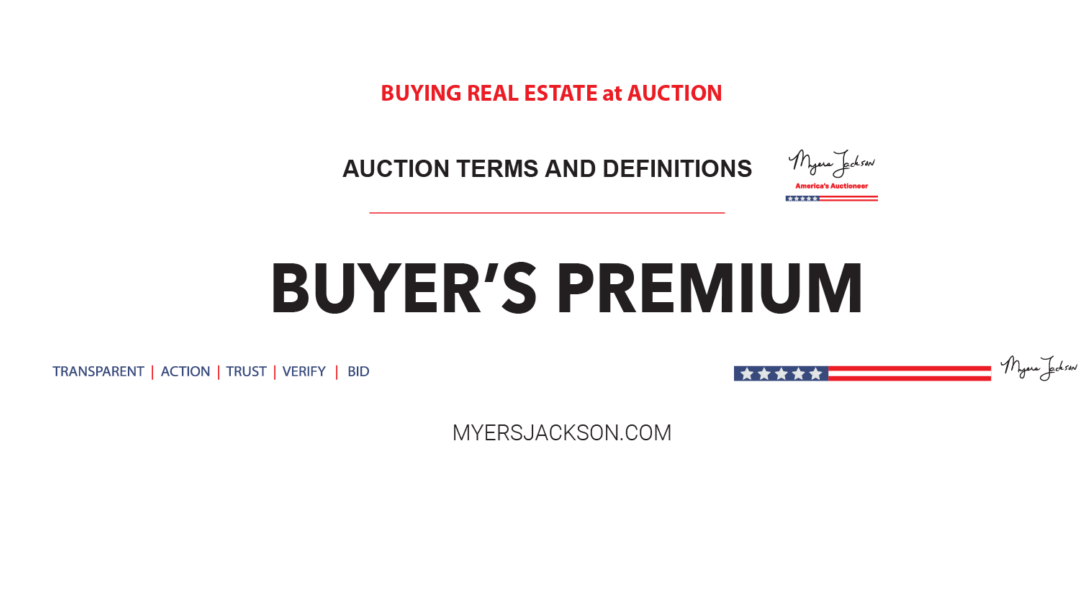Buyer’s Premium
An advertised percentage of the high bid or flat fee added to the high bid to determine the total contract price to be paid by the buyer.
A buyers premium was first used in England by what some people say was CRISTI‘s Auction house. This was a fee that was added in addition to the bid price and as a method used as a payment for services rendered.
In recent years, people have referred to this as an auction premium. Some would say this is also the auctioneers’s fee, however, remember the term caveat emptor, or as what auctioneers and many people refer to as buyer’s beware. The auctioneer in most cases is dictated by law to announce if there is an auctioneer or buyer premium involved in the transaction and if so, the auctioneer must announce that buyer’s premium amount in advance. With further caution, the buyer must be aware that the auction fee and the buyer’s premium may be different amounts and may be administered in different applications. Some auctioneers may collect a buyer’s premium on behalf of the seller. In some cases, the seller has given the auctioneer permission to collect that buyer premium at the time the sale is consummated and permission to collect such a fee from the buyer at the time of the sale or the fall of the hammer. The auctioneer may collect an additional fee call the auctioneer’s fee. This could be separate from the buyers premium. In this instance, the buyers premium may be rolled into the contract price. Be cautious. Read the terms and conditions of sale to see how it is applied. The auctioneer’s fee may be payable at the time the property sells and the hammer falls.
For other terms and definitions
related to real estate auctions
For all active auctions,
and properties for sale
Get InTouch
Email:
411@myersjackson.com
Phone:
+1-844-400-2828 Phone
+1-469-460-4848 Text
Address:
Myers Jackson
P.O. Box 2014, Grapevine, TX 76099

